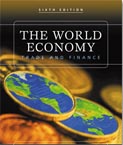Amsterdam's Financial Mile facing credit crisis
 Amsterdam - It's a beautiful Autumn day in Buitenveldert, one of Amsterdam's most popular neighbourhoods set against a backdrop of high-rises including the headquarters of Dutch ABN Amro and ING Bank.
Amsterdam - It's a beautiful Autumn day in Buitenveldert, one of Amsterdam's most popular neighbourhoods set against a backdrop of high-rises including the headquarters of Dutch ABN Amro and ING Bank.
Children bike around safely here on the broad bicycle paths, separated by trees from the roads.
During office hours, elderly people are strolling around in one of the many parks or chatting on benches at the upscale Gelderland plein shopping centre.
But despite appearances of such a peaceful urban setting, times have changed for Buitenveldert.
The Financial Mile district, the booming business area along Amsterdam's ring motorway, is feeling the pinch of the financial crisis as banks are reconsidering their share in a 4-billion euros (5.333 billion dollars) development of the railway station area.
A total of 1 million square metres will be developed on the strip alongside the motor ring road separating the old from the new Amsterdam.
The new construction will be a mixture of businesses, residential homes, schools, universities, theatres and restaurants.
But while part of the project continues as planned, its heart, the redevelopment of the underground railway station with commercial properties above, has to find new shareholders.
Until recently, ABN Amro, Fortis, ING, HBOS, Royal Bank of Scotland and others - were lining up to participate in the construction project that would connect the old and new parts of Amsterdam and boost local business.
"The banks can no longer commit themselves to the extend they thought they could in the past," says Jan Stoutenbeek, director of the Financial Mile project management bureau which is responsible for the area's development.
Originally, Stoutenbeek explains, the city wanted to establish a Financial Mile company. Sixty per cent of its shares would be auctioned among banks, while the city of Amsterdam and the Dutch state would each become 20 per cent stakeholders.
"With the credit crisis going on, the auction will probably be called off," Stoutenbeek says. "A decision about that will be taken within the next few weeks."
When Marissa and Peter moved to their new home in Buitenveldert several years ago, they never imagined the area could be hit by economic problems.
"Buitenveldert has it all," Marissa explains. "There are plenty of schools, a good university, great sports facilities, lots of parks. Both Peter and I work around the corner. We go to work on our bikes."
Thanks to the light rail, Amsterdam's old city centre can be reached within 20 minutes. In 2013, the new subway would reduce that to 9 minutes.
So when Marissa and Peter put their home on sale in April, they expected the process to be finished in just a few weeks.
Six months later, nothing has happened - and no potential buyer is even visiting their well-maintained home.
"Maybe it's the credit crisis," says Peter. "I don't know."
Financial Mile bureau director Jan Stoutenbeek however trusts the current setback will only be temporary and not cause permanent problems for the South Amsterdam area.
He says his bureau will continue talks with a few banks about possible participation in the construction project on a one-to-one basis.
"All our regular construction in the Financial Mile district continues as usual. Buildings that are currently being built or that are nearly finished, are filling up with renters just as quickly as ever before," Stoutenbeek said.
In the end, he says, the Financial Mile district and Buitenveldert will be spared from true downfall thanks to their strategic location, he believes.
"Trains from Amsterdam South railway station in the Financial Mile district depart to Schiphol Airport every 13 minutes. A businessman is an eight-minute train ride away from the gate to the world, while his home can be around the corner. That is absolutely unique." (dpa)